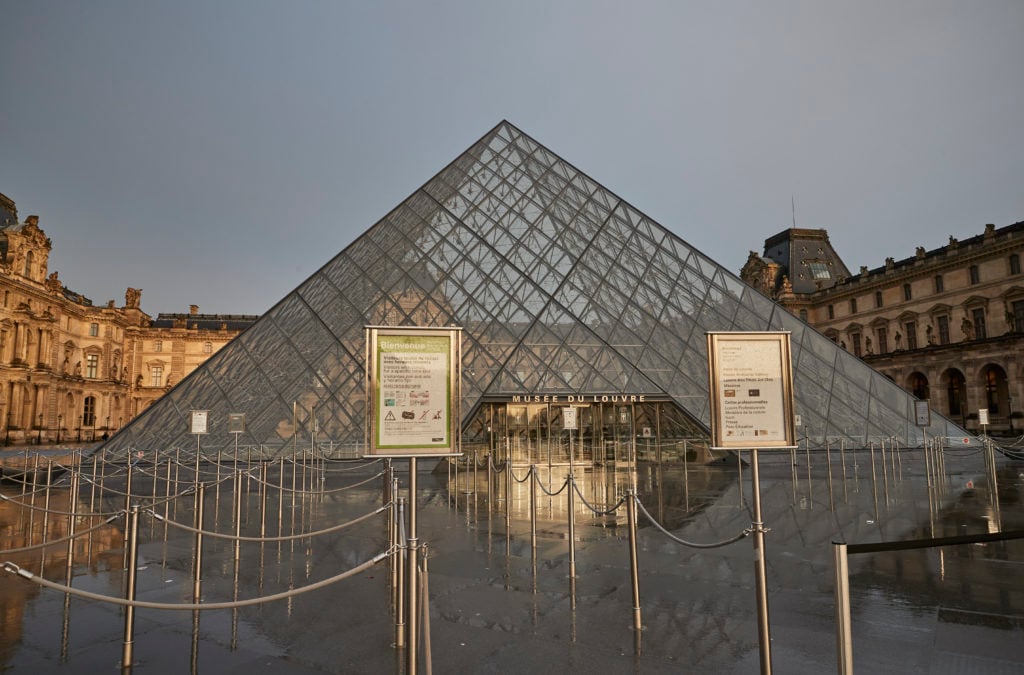Art World
When the Louvre Reopens Next Week, Patient Visitors Will Be Able to View the Mona Lisa Practically Alone
The museum has lost an estimated $45 million since the shutdown and expects attendance to plummet.

The museum has lost an estimated $45 million since the shutdown and expects attendance to plummet.

Taylor Dafoe

On July 6, the Musée du Louvre in Paris, the biggest art museum in the world, will re-open for the first time in nearly four months.
But the experience art lovers have come to expect of visiting the 227-year-old institution will be very different.
Visitors will have to reserve a time slot to enter, and masks will be mandatory for all guests 11 and over, the institution announced this week. Signs will guide gallery-goers in a one-way direction and the cloakroom will be closed, meaning suitcases and other large bags won’t be allowed in.
Only 70 percent of the 925,000-square-foot museum will be open to the public. Fortunately for visitors, this will include many of the venue’s most-visited sections, including Greek and Roman antiquities galleries; the Italian, Spanish, and English paintings halls; and the areas devoted to 19th-century French painting. The museum’s greatest individual hits, like the Winged Victory of Samothrace and Venus de Milo, will also be on view.
And when it comes to the Louvre’s biggest draw, new policies may actually be a boon to art viewers.
The Mona Lisa, which previously could only be seen amongst throngs of selfie-takers, will be open to two visitors at a time for 10-to-15 minute increments. Those waiting to see Leonardo’s masterpiece must queue in spaced-out lines.

Jean-Luc Martinez, Director of Musée du Louvre ©Louvre Abu Dhabi Mohamed Somji
For the institution, reopening is a welcome return to business—and revenue. The Louvre has reportedly lost $45 million since its shutdown in March.
Ticket sales make up a large portion of the museum’s income. In 2018, the institution reported a record-breaking 10.2 million visitors, worth nearly $100 million in revenue. Yet expectations upon reopening are modest, especially considering that France’s borders are still closed to travelers outside the European Union.
In an interview with the New York Times, Louvre president Jean-Luc Martinez explained that, on average, upwards of 75 percent of the museum’s visitors are tourists. The number jumps up to a whopping 80 percent during the peak summer season.
“After the September 11, 2001, terrorist attacks, we lost 40 percent of our visitors, and took three years to get back on track,” Martinez told the Times. “After the 2015 terrorist attacks in France and elsewhere in Europe, we had another 40 percent drop, but everything normalized after a year.”
“This time, we don’t know what will happen,” he said. “Our worst-case scenario is that it will take us three years to get back to our normal visitor levels.”
Martinez explained that the museum’s biggest challenge is to re-engage the French public, which has traditionally made up a small portion of its annual audience.
Asked by the Times if he thinks the museum will get back to 10 million visitors a year, despite experts suggesting a permanent shift in “mass tourism,” Martinez offered a moderately bold suggestion.
“Contrary to what some people think, the world after the coronavirus will not be that different from the world before.”